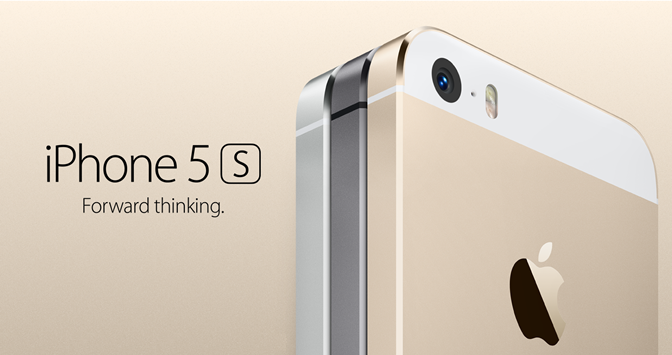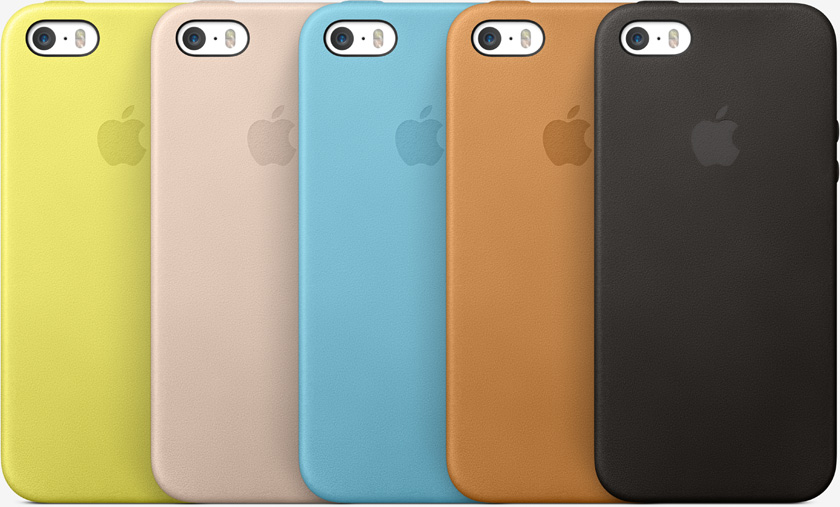New colour options for chassis and cases
The new iPhone comes in three colour options, two of which are new – gold, silver and ‘space gray’. Gold is completely new to the line, and is a pale champagne colour that looks very fetching with white caps. Silver is the same as the white option that debuted with the iPhone 5, while Space Gray includes the same black caps as the iPhone 5, but with a lighter shell colour.
Like the iPhone 5C, a new line of cases will debut with the 5S. The cases are made of leather, and come in six colours – brown, beige, black, yellow, blue and red. This latter case is a (PROJECT RED) edition, which means some portion of the proceeds will go to the charity of the same name. Of course, Mobile Fun will also be stocking a wide range of third party iPhone 5S cases.
An improved camera
iPhones have always been renowned for their cameras, and the new iPhone 5S is no different. Like the HTC One, Apple have increased the size of the sensor by 15%, making each pixel larger while keeping the number of pixels the same at 8 megapixels – this should make more better quality images, particularly in low light.
The camera now takes multiple photos each time you press the shutter, keeping the one that is the most in-focus. In addition, the new dual LED flash tries to attain the best possible colour balance through varying the amount of flash from each of the LEDs. Images are also automatically stabilised. All of this should make for much better shots out of the box.
You can also manually activate a burst mode, shooting at 10 FPS. There’s also an option for shooting slow-motion video at 120 FPS, in 720p. Finally, software for stitching together panoramas also exists.
Fingerprint sensor security
The biggest entirely new feature is a fingerprint sensor built into the home button. The button is flatter than it was previously, made of sapphire with a stainless steel ring surrounding it. Your fingerprint is stored and encrypted locally on your phone, and isn’t uploaded to Apple – or the NSA! Once stored, you can place your finger on the sensor at any orientation and still have it work.
The sensor can replace the swipe to unlock feature, allowing you to unlock your phone securely with a single touch. You also use your fingerprint to authenticate app store purchases and other things that would normally require your iTunes password.
Improved processor and chipset
Like other S model iPhones, the 5S will ship with an improved CPU. Apple are calling it the A7, and it will be the first 64 bit CPU in a smartphone, requiring a re-build of iOS 7 and all first-party apps. The CPU is still capable of executing 32 bit apps though, so compatibility won’t be an issue.
Of course, just being 64 bit doesn’t necessarily make for performance improvements – the Nintendo 64 was 64 bit as well – but it does allow for memory addressing of more than 4 GB, which may be useful a couple of years down the road. Apple report that the new CPU is twice as fast as the previous model, with five times the graphics performance as well. Assuming that’s accurate, it’s an impressive leap.
The 5S also comes with a new dedicated motion co-processor, like that of the Motorola Moto X. It provides contextual information to applications, e.g. letting them know when you’re stationary, walking or driving.
Despite the extra performance, battery life has been improved to 250 hours of standby time (from 225 hours) and 3G talk time has moved to 10 hours (from 8 hours).
Release date and pricing
The iPhone 5S will be available to pre-order from September 13th, and will start showing up in stores and on people’s doorsteps on September 20th. The 16 GB model will be £549 sim-free. The 32 GB model is £629, while the 64 GB is £709. Contract pricing hasn’t yet been announced, but should be roughly consistent with previous iPhones.

